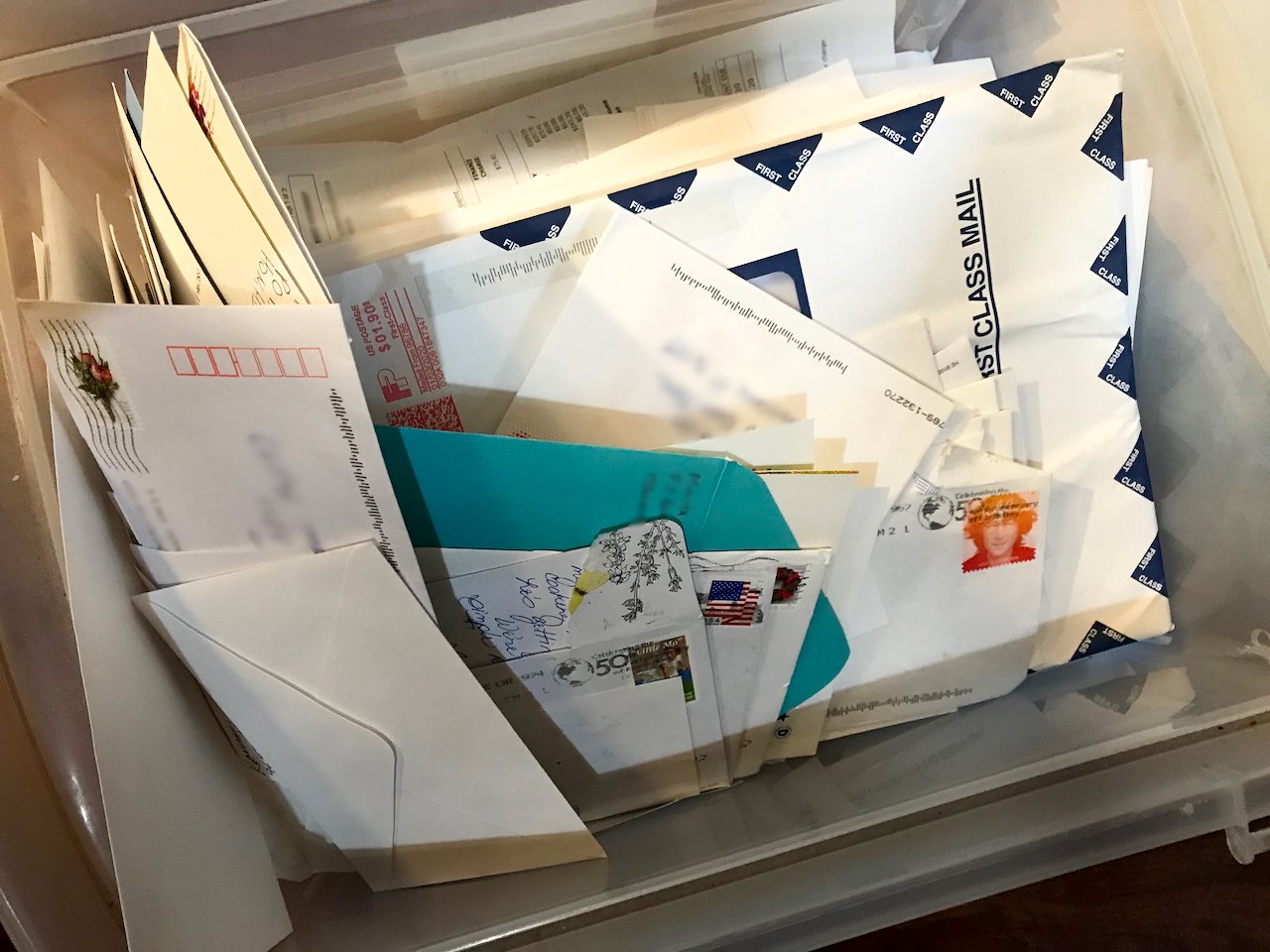Storing papers horizontally in piles is a recipe for clutter and distraction.
A client said to me, "I'm drowning in paper. I need help!"
When I arrived at her home, I saw papers—and lots of them! There were papers in piles, papers inside folders (also piled), and also some papers in folders stored upright in open plastic boxes. She explained that she had several big projects going on right now, including job applications, medical arrangements for a family member, and a project related to a vacation rental property she owns.
"My problem is that I need to have things out," she said. "If they're put away, I'll forget. But then my papers are everywhere. I put them in folders, but I still can't find things and feel overwhelmed."
There are “stuff out” people, and there are “stuff away” people.
Right away I understood that there were a few different things going on here.
1) My client was a "stuff out" person.
There are “stuff out” people, and there are “stuff away” people. Putting everything away and having an empty desk like you live at Ikea doesn't work for “stuff out” people. They need visual reminders of what they have. This is not some kind of a character flaw. It’s simply that some people’s brains work differently than others.
Sometimes it seems like the rules are created for “stuff away” people. We're taught that we organize papers by putting them in folders—and then putting those folders away so your desk is "clear". But putting everything away can trip up "stuff out" people, because things are hidden from them.
2) Not all papers are created equal.
Some papers are "one and done", single tasks. Other papers are part of a project. Projects were a big an issue for my client. As a “stuff out” person, she needed her active project papers to be "out" at all times. But the way they were out was causing clutter and confusion, making her feel like she was up to her neck in paper.
3) She needed a system.
The folders & plastic boxes was an attempt at a system, but it was incomplete and not working for her. There were multiple instances of folders with the same name that she'd created at different times. Papers related to current tasks were mixed up with completed papers and paid bills. This necessitated a constant process of churning and rediscovering which tasks needed doing.
She did also have a filing cabinet, but she wasn't really using it, except as a place to store extra office supplies left over from an old job.
A system that doesn’t hide your papers from you.
Creating a system that doesn’t hide your papers from you
To begin, we sorted all of her papers into two categories:
Current papers such as bills to be paid, correspondence to be answered, and ongoing projects.
Done papers such as paid bills, letters already answered, and completed projects.
We agreed that done papers were cluttering up her active workspace. How should they be handled? My client said she'd feel OK about putting away done papers in her filing cabinet. They'd be there if needed, but they were no longer "out", creating clutter and distraction. She also decided to donate a large proportion of the extra office supplies she'd been storing in the file cabinet for several years. "I'm never going to use all that stuff, but the school would love to have it."
Tasks versus projects
Now, what about current papers? This was where we needed to make a distinction between tasks and projects.
A task is a “one and done” item. For example, the electric bill. Pay it, and it's done.
We placed the “one and done” tasks in a single In Box*. No folders, just loose papers in a box which would sit on the counter where she could see it. She could go through this box daily, complete tasks one by one, then file the task paper in the cabinet.
*The In Box is also known as the Action Required File. Tasks requiring action should be placed in this box as soon as they enter the house. See this article for more help with paper management.
A project contains more than one task. It can also have reference materials associated with it. This means it's not “one and done”, but will be sticking around for a while, until all tasks that make up the project are finished. Storage in folders is helpful here, but it's best to use as few folders as possible.
A simple system for projects
We created a simple system for projects:
Labels are important visual reminders. Keep your label names simple and obvious..
Each project got its own folder with a label (for example, Job Applications)
Within the project folder, we created 3 labeled subfolders: Tasks, Tasks-Done, and Reference.
Completed tasks can be moved from Tasks to Tasks-Done.
The entire project folder is stored upright in a plastic box.
When the project is done, the entire project folder gets filed in the file cabinet.
We used the open plastic boxes and folders my client already owned. Without lids, the labeled folders were always visible. The boxes themselves would live on the counter where my client could see them.
After our session, my client still has her papers out—but with a difference.
The difference is that they're no longer in piles, or hidden in folders that aren't part of a system. They're organized in a way that works for her: easy to access, and stored in plain sight, where they'll always be top of mind. She's gone from feeling overwhelmed, to feeling in control of her papers and her life.
Overwhelmed by papers? I'm a Chicago-based professional organizer. Whether you're a "stuff out" person or a "stuff away" person, I'll work with you to create a paper management system that's right for you. Contact me for your free 30-minute consultation. 🌱










